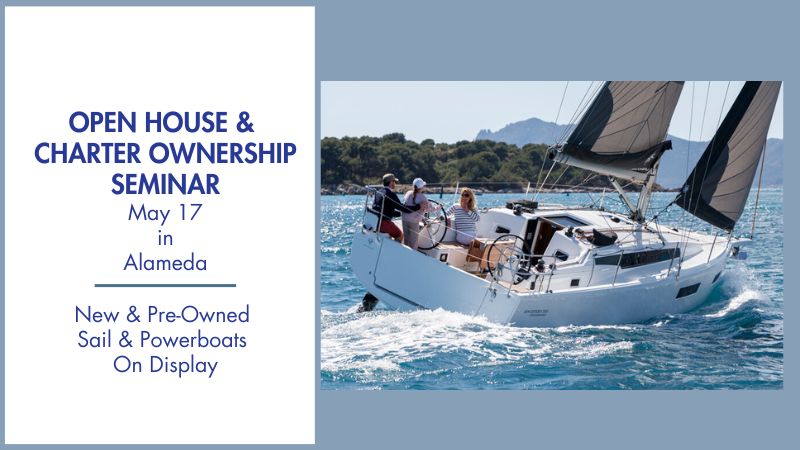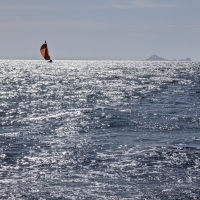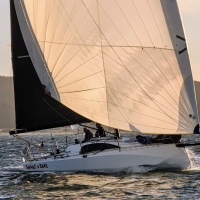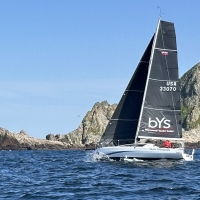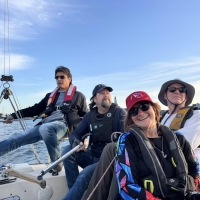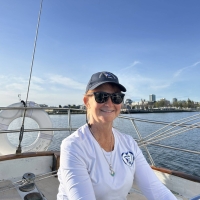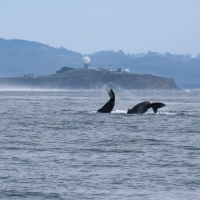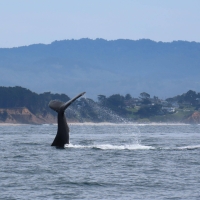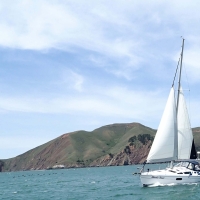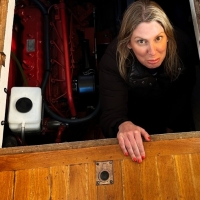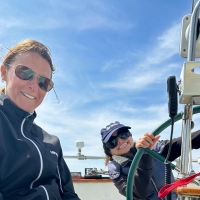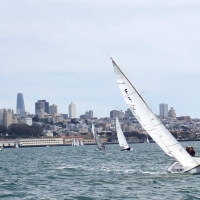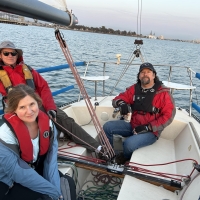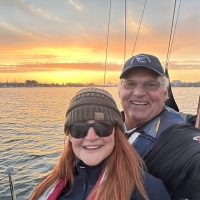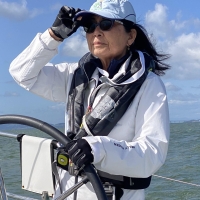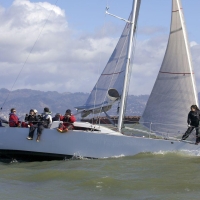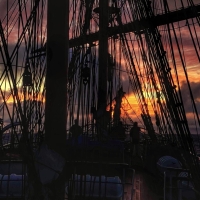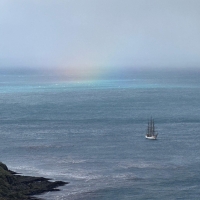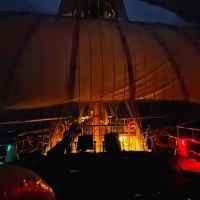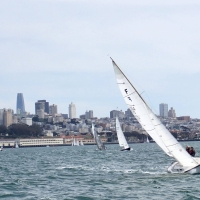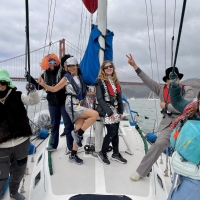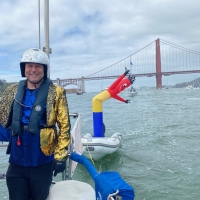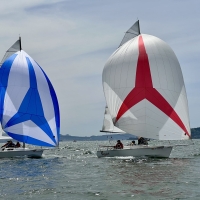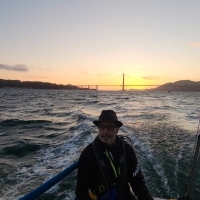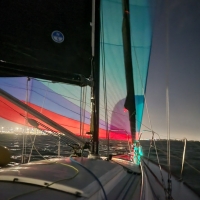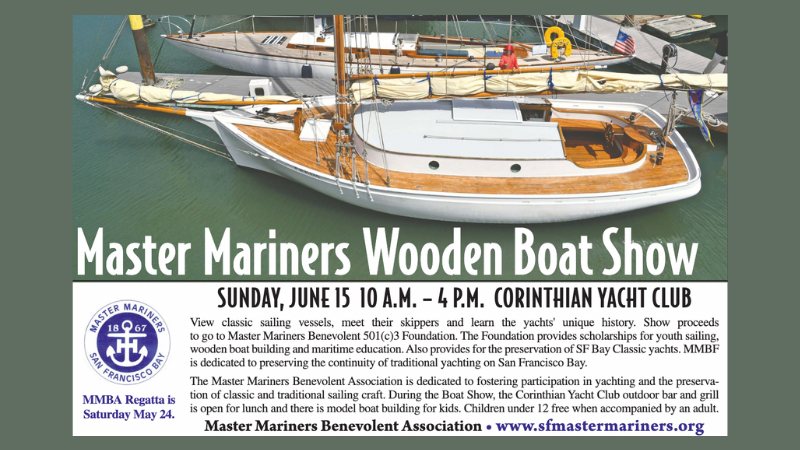
How To Get Started Racing if You Want To Crew
I am going to start with the assumption that you have been out on a sailboat at least a few times and enjoyed it. Now you want to get into racing. You are in luck because unless skippers like to sail singlehanded, they need crew.
Let’s break it down into three areas that don’t necessarily need to happen in order.
Basic Sailing Skills
To be a useful member of a race crew, it helps if you have basic sailing skills. Read a book, take a class, or just get onto a boat and learn by doing. Better yet, do all three. Good classes are available at several sailing schools in the Bay Area. The basic class from American Sailing Association, ASA 101, will cost more than $1,000 and run four full days of classroom and on-the-water time. Some yacht clubs also offer sailing classes at lower cost, although some only for their members. If classes are not in your budget, don’t despair. Get yourself a book on basic sailing and read it carefully. If you already have basic sailing skills, you are ahead of the game. But the best way to learn to sail is to sail. There is a good article at yra.org/goracing that describes what to expect on your first race.
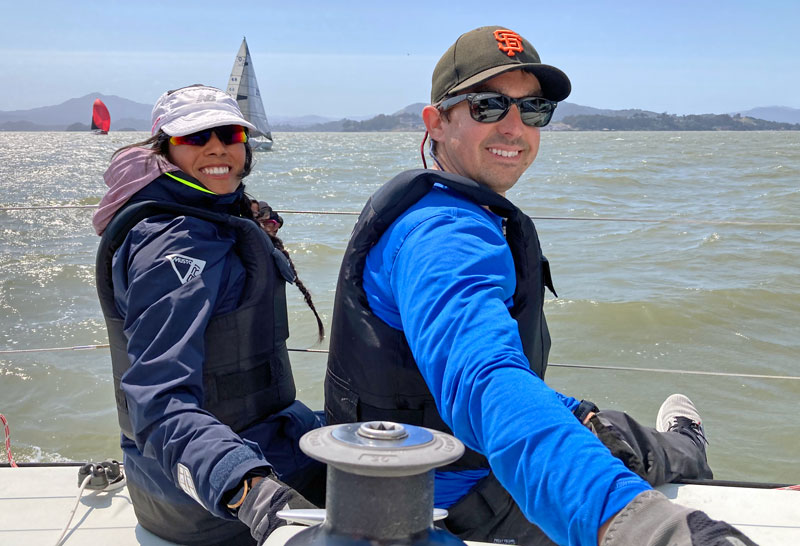
Find a Boat
Now that you have the potential to be more than a passenger, you need to find a boat. One way is to find a weeknight beer can race. These run almost every night somewhere on the Bay, with the majority on Wednesday and Friday. There is a helpful list in the Latitude 38 Calendar. Just show up and walk the docks or use the contact info in the calendar and they might be able to help find you a ride. It never hurts to show up with a six-pack or other goodies to share with your new friends. Another method is to sign up on a crew list like the one on the Latitude 38 website. Be honest about what you do and don’t know. Most skippers are willing to take out a newbie, especially for the more casual races.
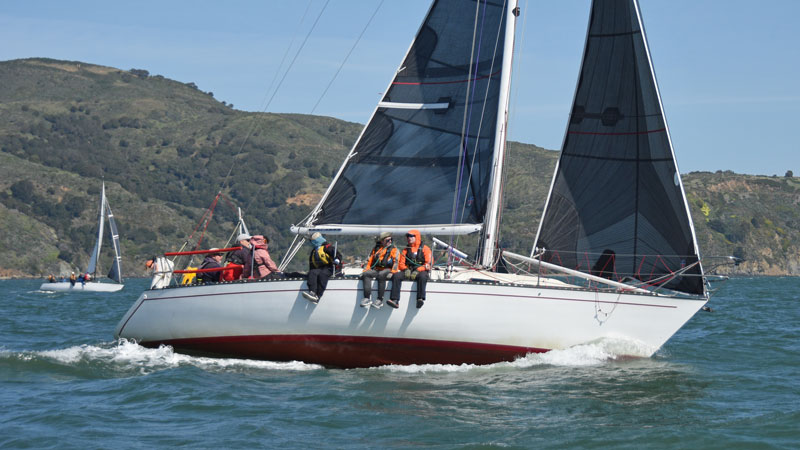
Be aware that every race program is different. Some are very casual, some more serious. Try a couple of different boats and find one that matches what you are looking for. If you are lucky and find a boat that is a fit and you get invited back, remember that the skipper puts a lot of effort and money into racing their boat. Show up when you say you will and be prepared to help put the boat together before the race and put it away after the race. In the process, you will learn how things work on that boat.
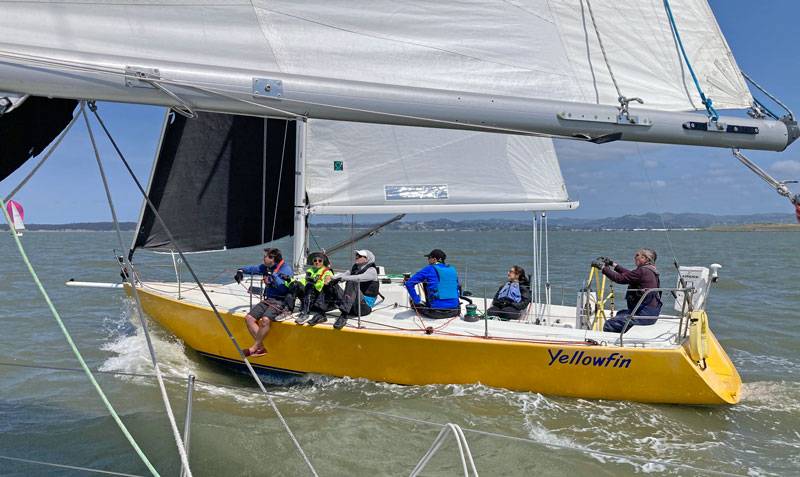
Sailing Gear
The last item on your list is sailing gear. Most skippers I know have lots of spares you can borrow at first, but eventually you will want your own. San Francisco Bay can be cold and wet. At a minimum I suggest you get foul weather pants, a PFD (lifejacket), knee pads, and some sailing gloves. Add a jacket and a hat you already have and it’s a good start. Do your research on foulies (avoid the cheap stuff intended for fishing) or ask your new friends what they use and why.
As you gain knowledge and experience and network with other crew you will find plenty of opportunities to race. Boats need crew!
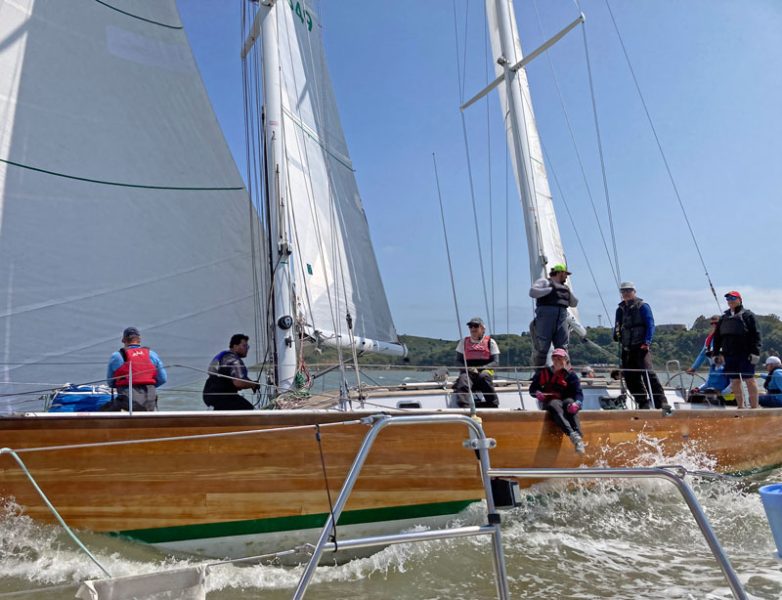
L.A. Fires: Two Negatives Make a Positive
This month’s Sightings features a heartfelt story by Los Angeles resident Adam Kline about unimaginable loss — both from the horrific L.A. fires, and from illness — followed by unimaginable generosity in the wake of tragedy.
Unfortunately, we made a mistake in the layout of the story and accidentally swapped a photo from another Sightings story. This kind of mistake is always embarrassing, but it’s especially glaring given the heavy content in Adam’s story. We sincerely apologize for the error.
Here’s the mistaken layout:
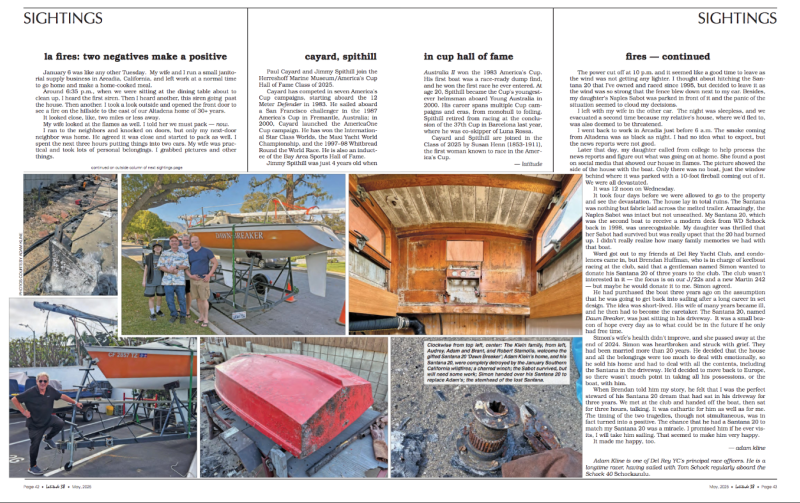
Here’s the photo that should have run:
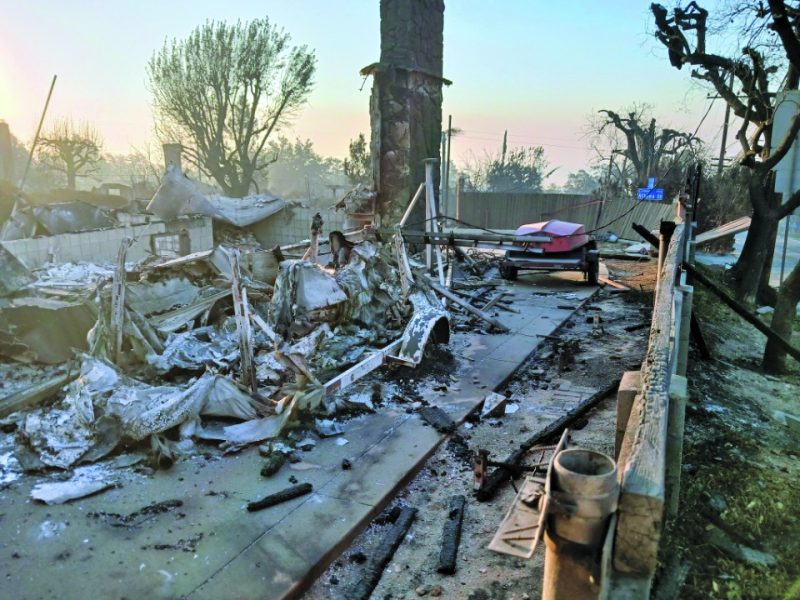
And here is an excerpt from Adam’s story, “L.A. Fires: Two Negatives Make a Positive:”
January 6 was like any other Tuesday. My wife and I run a small janitorial supply business in Arcadia, California, and left work at a normal time to go home and make a home-cooked meal.
Around 6:35 p.m., when we were sitting at the dining table about to clean up, I heard the first siren. Then I heard another, this siren going past the house. Then another. I took a look outside and opened the front door to see a fire on the hillside to the east of our Altadena home of 30+ years.
It looked close, like, two miles or less away.
My wife looked at the flames as well. I told her we must pack — now.
I ran to the neighbors and knocked on doors, but only my next-door neighbor was home. He agreed it was close and started to pack as well. I spent the next three hours putting things into two cars. My wife was practical and took lots of personal belongings. I grabbed pictures and other things.
The power cut off at 10 p.m. and it seemed like a good time to leave as the wind was not getting any lighter. I thought about hitching up the Santana 20 that I’ve owned and raced since 1995, but decided to leave it as the wind was so strong that the fence blew down next to my car. Besides, my daughter’s Naples Sabot was parked in front of it and the panic of the situation seemed to cloud my decisions.
I left with my wife in the other car. The night was sleepless, and we evacuated a second time because my relative’s house, where we’d fled to, was also deemed to be threatened.
I went back to work in Arcadia just before 6 a.m. The smoke coming from Altadena was as black as night. I had no idea what to expect, but the news reports were not good.
Later that day, my daughter called from college to help process the news reports and figure out what was going on at home. She found a post on social media that showed our house in flames. The picture showed the side of the house with the boat. Only there was no boat, just the window behind where it was parked with a 10-foot fireball coming out of it. We were all devastated.
It was 12 noon on Wednesday.
It took four days before we were allowed to go to the property and see the devastation. The house lay in total ruins. The Santana was nothing but fabric laid across the melted trailer. Amazingly, the Naples Sabot was intact but not unscathed. My Santana 20, which was the second boat to receive a modern deck from WD Schock back in 1998, was unrecognizable. My daughter was thrilled that her Sabot had survived but was really upset that the 20 had burned up. I didn’t really realize how many family memories we had with that boat.
Word got out to my friends at Del Rey Yacht Club, and condolences came in, but Brendan Huffman, who is in charge of keelboat racing at the club, said that a gentleman named Simon wanted to donate his Santana 20 of three years to the club. The club wasn’t interested in it — the focus is on our J/22s and a new Martin 242 — but maybe he would donate it to me. Simon agreed.
Join Club Nautique for an Open House on May 17 in Alameda
Come check out the latest new Jeanneau sailboats and pre-owned sail and powerboats for sale and register for our Charter Ownership Seminar.
Whoops! Mistakes Made on the Water
Here’s a personal question for you, Latitude Nation: What are some notable mistakes, mishaps or misfortunes that you’ve had while sailing or messing about with boats? What was silly and ridiculous? What was serious and sobering? What mistakes have led to demonstrably improved seamanship?
What mistakes are legendary to you?
Are you a trial-and-error type sailor and learner with an “If it’s gonna happen, it’s gonna happen out there” attitude? Or are you a meticulous planner?
What does the comparison of mistakes look like between these personality types?
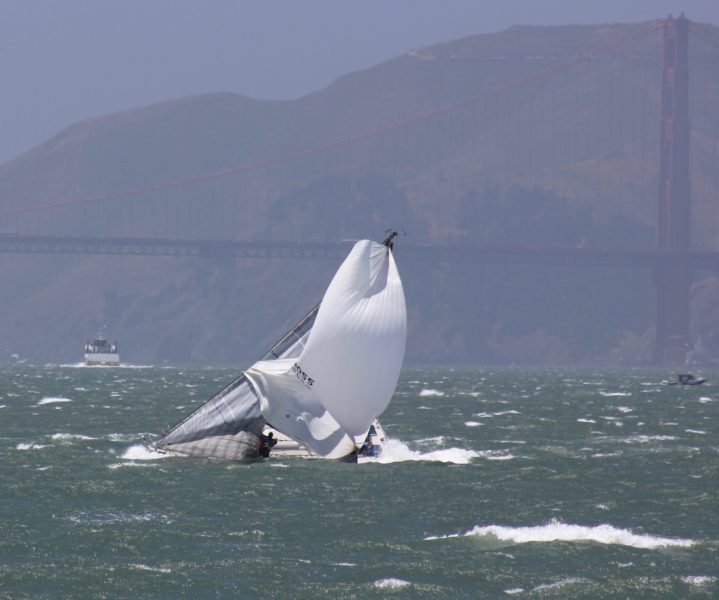
One of my smaller, lower-budget “duh” moments on a boat was about seven years ago while anchored at China Camp. I threw a lifejacket into the water with a long line attached … except that the long line wasn’t attached.
I can’t remember exactly what my faux pas was — I think I had led the rope through the lifejacket and intended to tie a bowline, but hadn’t yet tied the knot when I threw it into the water. I clearly remember the lifejacket floating helplessly away, astonished that I’d made such a ridiculous mistake. I thought about jumping in after it, but then I would have had to scramble-strip and deal with the gnarly current. The “swimming line” was necessary because the current ripped through China Camp, and we’d been shocked during previous anchorings at how difficult it was just to swim in place with the boat, let alone swim back to it.
So I watched the poor lifejacket drift away to its slow demise somewhere along the marshy shores of San Pablo Bay. My biggest concern was the vest degrading in the sun and saltwater for years, marring the otherwise clean shores of the Bay. The thought stuck in my mind like a thorn for months.
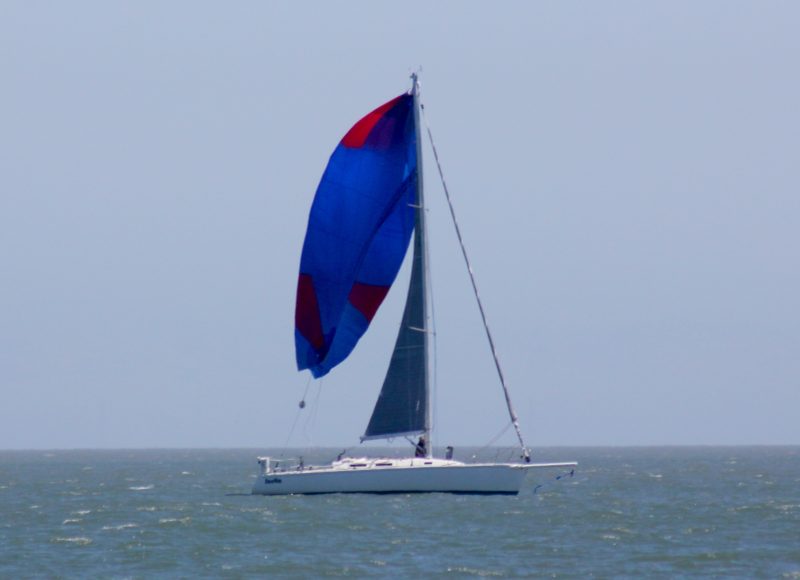
Your turn, Latitude Nation. Let’s hear about all of those “whoopsie” moments both small and large. All mistakes are welcome, but it’s those mistakes that made you a better sailor that can be particularly informative to the rest of us.
Please comment below, or email us here (especially if you have pictures).
Sailagram: A Snapshot of April Sailing
Welcome to April’s Sailagram. There are so many smiling faces we’ve decided to call April the month of “happiness on the water.” Is your photo among them? If not, send something for the next gallery: [email protected].

